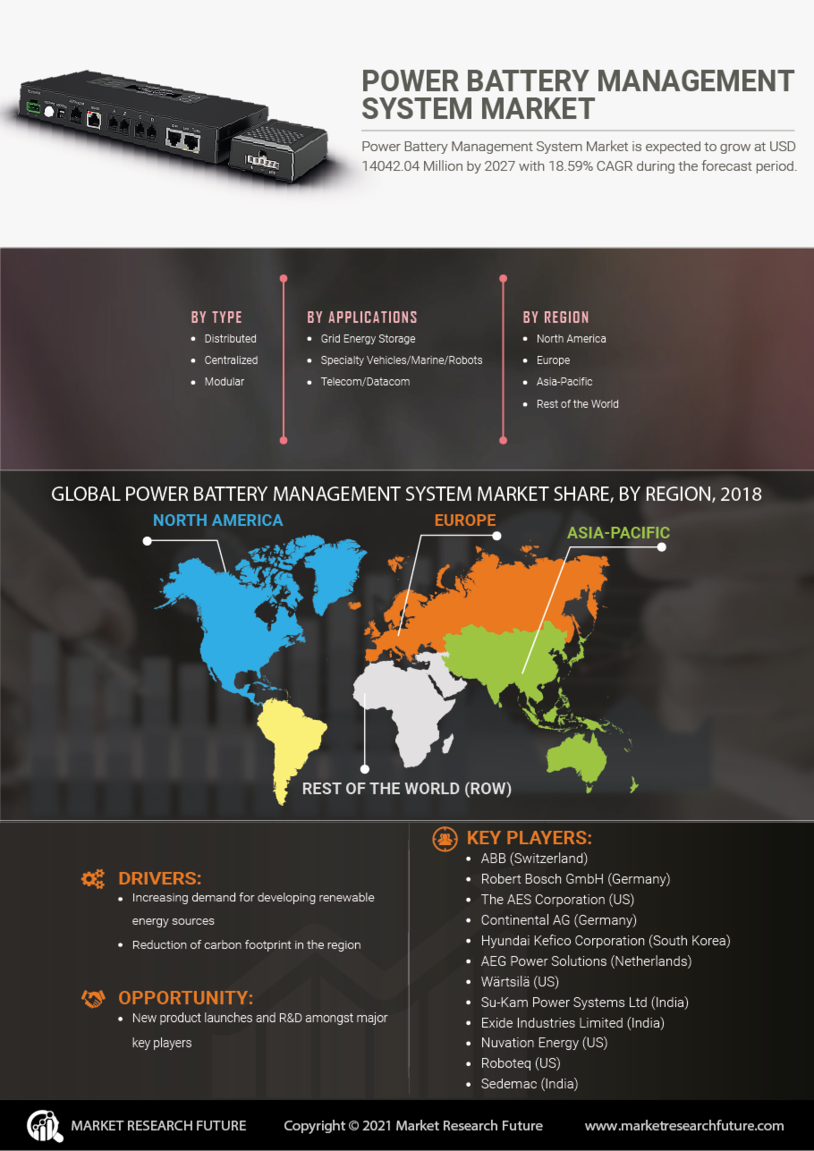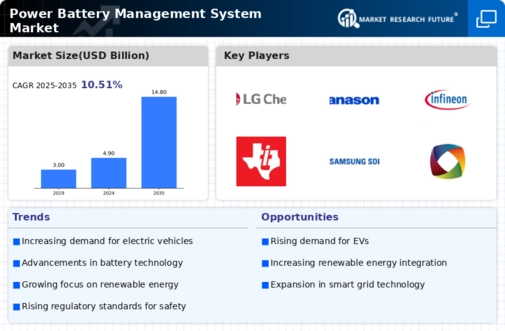Rising Demand for Electric Vehicles
The increasing adoption of electric vehicles (EVs) is a primary driver for the Power Battery Management System Market. As consumers and manufacturers alike prioritize sustainability, the demand for efficient battery management systems has surged. In 2025, the EV market is projected to grow at a compound annual growth rate (CAGR) of approximately 20%, necessitating advanced battery management solutions to optimize performance and longevity. This trend indicates a robust market for power battery management systems, as they play a crucial role in enhancing battery efficiency, safety, and overall vehicle performance. Furthermore, the integration of these systems is essential for meeting regulatory standards and consumer expectations, thereby solidifying their importance in the automotive sector.
Increased Focus on Energy Efficiency
The growing emphasis on energy efficiency across various sectors is a crucial driver for the Power Battery Management System Market. As industries and consumers seek to reduce energy consumption and costs, the demand for advanced battery management systems is expected to rise. In 2025, the market for energy-efficient technologies is anticipated to grow significantly, with battery management systems playing a vital role in optimizing energy use in electric vehicles and industrial applications. These systems not only enhance battery life but also contribute to overall energy savings, aligning with global sustainability goals. The focus on energy efficiency is likely to propel the adoption of innovative battery management solutions, further stimulating market growth.
Government Initiatives and Regulations
Government policies and regulations aimed at promoting clean energy solutions are pivotal for the Power Battery Management System Market. Many countries are implementing stringent emissions standards and providing incentives for electric vehicle adoption, which in turn drives the demand for efficient battery management systems. For instance, various governments have set ambitious targets for reducing carbon emissions by 2030, which necessitates the integration of advanced battery technologies. This regulatory environment fosters innovation and investment in battery management systems, as manufacturers seek to comply with new standards while enhancing performance and safety. Consequently, the market is likely to experience sustained growth as these initiatives gain momentum.
Growth of Renewable Energy Storage Solutions
The expansion of renewable energy sources, such as solar and wind, is a significant driver for the Power Battery Management System Market. As the need for energy storage solutions increases, efficient battery management systems become essential for optimizing the performance of energy storage systems. In 2025, the energy storage market is projected to reach USD 20 billion, with a substantial portion attributed to advancements in battery management technologies. These systems ensure that energy is stored and utilized effectively, thereby enhancing the reliability and efficiency of renewable energy systems. The synergy between renewable energy and battery management systems is likely to create new opportunities for market players, as the transition to sustainable energy solutions accelerates.
Technological Advancements in Battery Management
Technological innovations are significantly influencing the Power Battery Management System Market. The development of sophisticated algorithms and software for battery management systems enhances their ability to monitor and control battery performance. In 2025, it is estimated that the market for smart battery management systems will reach USD 5 billion, driven by advancements in artificial intelligence and machine learning. These technologies enable real-time data analysis, predictive maintenance, and improved energy efficiency, which are critical for applications in electric vehicles and renewable energy storage. As manufacturers continue to invest in R&D, the capabilities of battery management systems are expected to expand, further propelling market growth.


















Leave a Comment